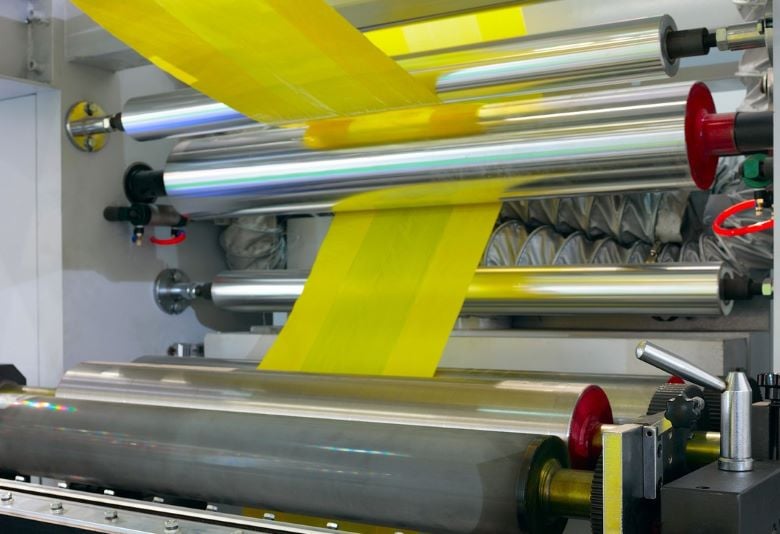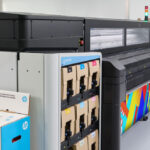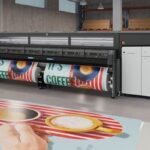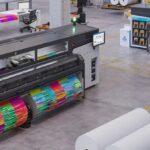In the bustling world of label production, the debate of flexo printing vs digital for labels is a topic of much discussion among marketing professionals and businesses alike. Each method has its own unique advantages and considerations, making the choice between the two a crucial decision for those in the industry.
In this article, we will delve into the intricacies of both flexo printing and digital printing, providing an in-depth comparison to help you make an informed decision. Whether you’re a marketing professional seeking the best way to produce labels for your brand or a business owner looking to understand the nuances of these technologies, this guide is tailored to meet your needs.

Understanding Flexo Printing
Flexo printing, short for flexographic printing, is a traditional method that uses flexible relief plates. It’s a versatile process, allowing for printing on various materials such as plastic, metallic films, and paper. Flexo printing is renowned for its speed and efficiency, especially for large volume orders.
Advantages of Flexo Printing
- High Speed: Flexo printing is excellent for long runs, making it ideal for mass production.
- Versatility: Capable of printing on diverse substrates.
- Cost-Effective: Economical for large quantities.
Limitations of Flexo Printing
- Setup Time: Requires significant setup, not suitable for short runs.
- Complex Designs: May struggle with intricate designs compared to digital printing.
Exploring Digital Printing
Digital printing, on the other hand, is a modern technique that involves printing digital-based images directly onto media. This method is known for its efficiency in producing small to medium-sized runs, with minimal setup required.
Advantages of Digital Printing
- Quick Turnaround: Requires less setup time, allowing for faster production.
- Flexibility: Ideal for short runs and customizable designs.
- Quality: Excellent for intricate designs with high quality.
Limitations of Digital Printing
- Cost for Large Runs: Less cost-effective for large volumes compared to flexo.
- Material Limitations: Not as versatile in terms of substrate options.
Key Differences Between Flexo and Digital Printing
The decision between flexo printing vs digital for labels often boils down to the specific needs of your project. Here are some key differences to consider:
Cost Considerations
While flexo printing remains cost-effective for high-volume orders, digital printing offers an economical solution for smaller runs. Businesses should evaluate their volume needs to determine which method aligns best with their budget.
Design Complexity
If your project involves intricate designs, digital printing might be the preferred choice due to its superior quality in detailed prints. Flexo printing, while capable, might not achieve the same level of detail.
Turnaround Time
For marketers under tight deadlines, digital printing offers a faster turnaround due to its minimal setup requirements. Conversely, flexo printing may require additional time due to its setup process.
When to Choose Flexo Printing?
If your project involves high-volume printing and less intricate designs, flexo printing is a robust choice. Its ability to handle diverse materials makes it suitable for various industries, including food packaging and retail.
When to Choose Digital Printing?
For businesses focusing on short runs and intricate, customizable designs, digital printing is the way to go. It’s ideal for marketing campaigns that require quick changes and adaptations.
Innovations in Printing Technology
Both flexo and digital printing are evolving with technological advancements, offering improved quality and efficiency. Innovations in ink technology and printer capabilities continue to enhance the printing landscape.
For more detailed insights into the flexographic process, you can visit Focus Label’s blog.
Environmental Considerations
With the rising importance of sustainability, both printing methods are adapting. Flexo printing has seen developments in eco-friendly inks, while digital printing offers less waste due to its print-on-demand nature.
Learn more about eco-friendly practices in printing by exploring ESG Compliance in Flexo Printing.
Conclusion
Choosing between flexo printing vs digital for labels ultimately depends on your specific needs. Both methods have distinct advantages, whether it’s the speed and versatility of flexo printing or the flexibility and quality of digital printing. Understanding these differences will guide you in selecting the most suitable option for your label production needs.

FAQs
What is the best printing method for large volume orders?
Flexo printing is typically more cost-effective and efficient for large volume orders due to its high-speed capabilities.
Can digital printing handle intricate designs?
Yes, digital printing excels in producing intricate and high-quality designs, making it ideal for detailed label artwork.
Which method is more environmentally friendly?
Both methods are making strides towards sustainability. Digital printing has less waste, while flexo printing uses eco-friendly inks.






